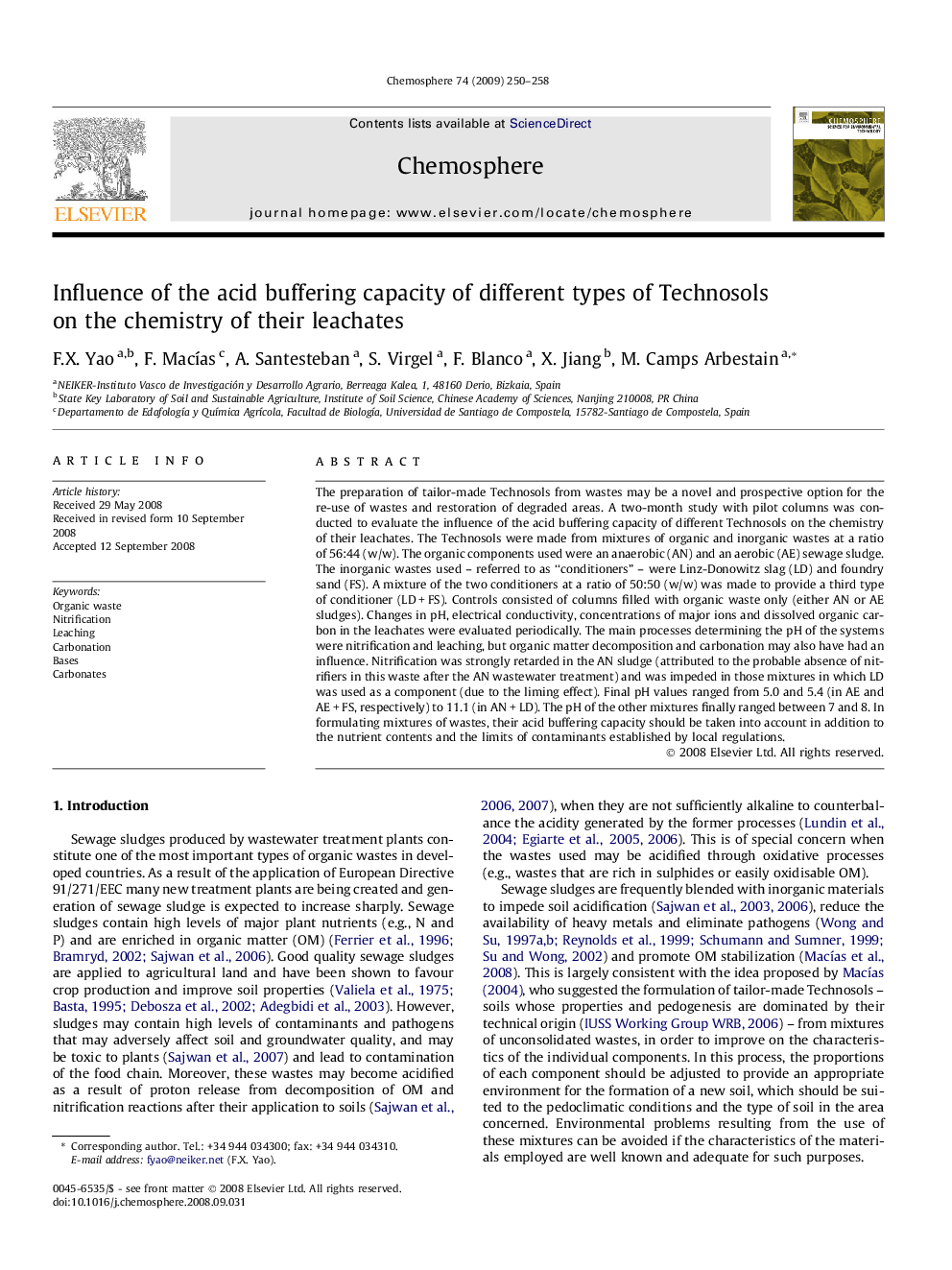| کد مقاله | کد نشریه | سال انتشار | مقاله انگلیسی | نسخه تمام متن |
|---|---|---|---|---|
| 4413289 | 1307672 | 2009 | 9 صفحه PDF | دانلود رایگان |

The preparation of tailor-made Technosols from wastes may be a novel and prospective option for the re-use of wastes and restoration of degraded areas. A two-month study with pilot columns was conducted to evaluate the influence of the acid buffering capacity of different Technosols on the chemistry of their leachates. The Technosols were made from mixtures of organic and inorganic wastes at a ratio of 56:44 (w/w). The organic components used were an anaerobic (AN) and an aerobic (AE) sewage sludge. The inorganic wastes used – referred to as “conditioners” – were Linz-Donowitz slag (LD) and foundry sand (FS). A mixture of the two conditioners at a ratio of 50:50 (w/w) was made to provide a third type of conditioner (LD + FS). Controls consisted of columns filled with organic waste only (either AN or AE sludges). Changes in pH, electrical conductivity, concentrations of major ions and dissolved organic carbon in the leachates were evaluated periodically. The main processes determining the pH of the systems were nitrification and leaching, but organic matter decomposition and carbonation may also have had an influence. Nitrification was strongly retarded in the AN sludge (attributed to the probable absence of nitrifiers in this waste after the AN wastewater treatment) and was impeded in those mixtures in which LD was used as a component (due to the liming effect). Final pH values ranged from 5.0 and 5.4 (in AE and AE + FS, respectively) to 11.1 (in AN + LD). The pH of the other mixtures finally ranged between 7 and 8. In formulating mixtures of wastes, their acid buffering capacity should be taken into account in addition to the nutrient contents and the limits of contaminants established by local regulations.
Journal: Chemosphere - Volume 74, Issue 2, January 2009, Pages 250–258